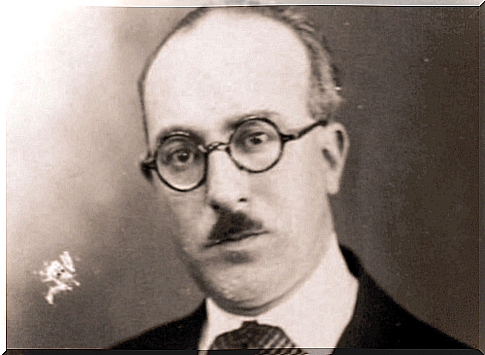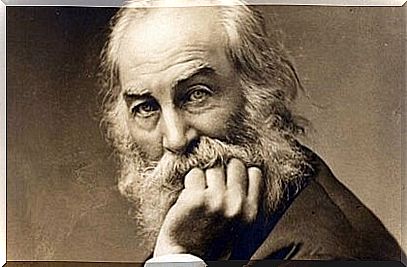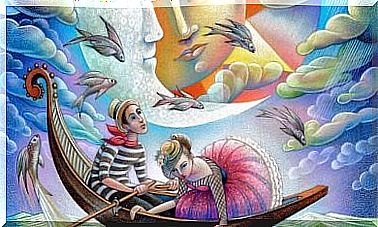Fernando Pessoa The Plural Writer

Writers write history through words. Each text takes us to unique places, to unexpected moments and provokes in us sometimes indescribable sensations. Fernando Pessoa has not been outdone in this area. Indeed, he makes us discover a plural identity in literature thanks to his writings.
This writer was a pioneer of the avant-garde. His work has indeed had a great influence in literature. In fact, there was a before and an after Fernando Pessoa. He also opened the way for the exploration of new literary forms.
Pessoa has described in his poems and his texts features peculiar to humanity. But he did it from different angles, even going so far as to appear as a different person in each of his writing. Amazing, isn’t it?
A quick glimpse into the life of Fernando Pessoa
Fernando Antonio Nogueira Pessoa was born in Lisbon, Portugal on June 13, 1888 at 3:20 p.m., on the fourth floor of house number 4 in Plaza San Carlos. It was the day of Saint Anthony of Lisbon.
A childhood marked by literature
From the age of 5, he began to arouse his interest in reading. He was strongly influenced by his mother, who loved to write texts, and by his father, who was a newspaper editor. He was also influenced by his paternal aunt Maria Xavier, who was a poet.
At the same age, he experienced the loss of his father to tuberculosis. A year later, his brother Jorge also died. However, according to Pessoa himself these family losses do not seem to have affected him too much.

He spent part of his childhood with his paternal grandmother Dionisia. The latter suffered from a mental imbalance and, consequently, she was sometimes interned in different Portuguese asylums, such as that of Rihalfoles. However, it is not known exactly what problem she was suffering from. In 1885, Pessoa’s mother remarried the Portuguese consul in Durban. As a result, the family settled in South Africa, where Pessoa remained for the rest of his childhood.
They later returned to Portugal and Pessoa decided to stay in his grandmother’s house. He enrolled in various courses related to literature. However, he did not follow any of them to the end. Six years later Dionisia died and Fernando Pessoa inherited his house. He then decided to install a printing press in this house.
Noticeable beginnings
It was at this time that he began to write. He writes literary reviews and translates for various magazines. In 1912, he became editor when he created the review Orpheu . This magazine is intended to be an international magazine that belongs to the avant-garde movement and in which several writers linked to Pessoa collaborate, such as: Sá Carneiro, Guilherme Santa Rita, Almada Negreiros and Álvaro de Campos. Moreover, it was in the second issue of this magazine that one of Álvaro de Campos’ most scandalous poems was published. This is the Ode to Walt Withman.
In 1915, Sá Carneiro, a close friend of Pessoa, committed suicide. This episode and the death of Maria Madalena were among the worst moments in Pessoa’s life. Although he intended to continue publishing the journal Orpheu and to release a third issue, however, this was not possible.
A year later, the poet decided to start a career as an astrologer. It may sound strange. In fact, it was common for many writers to occasionally engage in activities such as astrology. Four years later, he fell in love with Ofelia Quiroz, a saleswoman to whom he wrote poems and letters. Pessoa died on November 30, 1935, at the age of 47, from a hepatic colic. Some of his heteronyms appear on his grave.
Heteronyms
Definition
What do we mean by heteronyms? They are defined as a fictitious literary identity, created by an author, who even attributes a biography and a particular personality to him. This creation linked to Pessoa arises from a need to be plural, thanks to the exploration of other worlds and other sensations.
The heteronym is not just a fictional character or a pseudonym. It is also not just a simple character, nor an assumed name behind which an author hides. In fact, when reading the texts written by different heteronyms, we notice differences both in the characteristics of the author’s personality and in his way of writing or even in the literary movement that characterizes the work.
The heteronyms of Pessoa
The creation of the heteronyms of Pessoa is reflected in his own life and in his work. Its most famous heteronyms are:
- Alberto Caeiro Da Silva: He is also nicknamed the anti-humanist and mystical tuberculous
- Álvaro de Campos: he is characterized by the writing of tumultuous poetry and he suffers from nervous breakdowns
- Alberto Mora: this paranoid is considered a philosopher of paganism
- Ricardo Reis: a scientific neoclassicist with a disciplined and meticulous personality
Fernando Pessoa created not only heteronyms, but also semi-heteronyms like, for example, Bernardo Soares. In a letter addressed to Adolfo Casais Monteiro, Pessoa defines a “semi-heteronym” as “the result of the mutilation of my personality by taking away my reasoning and affectivity”.
In fact, he started to create heteronyms very early on. Thus, at the age of five, he created Caballero du Pas, a character to whom he wrote letters addressed to himself. Critics did not want to consider the Pas as a heteronomous because Pessoa’s literary knowledge was too poor at the time due to his age and the Pas certainly did not yet possess the depth of heteronyms to come. However, it is suggested that he could be considered a proto-heteronomous. Pessoa himself has suggested that his childhood was marked by a taste for mystification and artistic lying.
Other followers of heteronyms
Pessoa is not, however, the only author to have used heteronyms. Authors such as Miguel Unamuno and Antonio Machado have also used it. But, how does a heteronym arise? In an article in the journal Iberomania , researchers Pérez and Adam suggest that this type of creation is the product of a movement born at the end of the 19th century in the West. This movement is a response to an identity crisis. This is then reflected in an infinite number of works written by imaginary authors.
Out of curiosity, we can underline some crossroads between the life of Pessoa and certain characteristics of his heteronyms. For example, Alberto Cairo Da Silva had tuberculosis. Just like his father. María José suffered from a disability similar to that of her mother after her stroke. Rafael Baldaya was an astrologer. Just like Pessoa himself. Finally, Bernardo Soares, as Pessoa himself pointed out, was like him except for the emotional part.

Fernando Pessoa’s personality
Beyond his literary creation, it is also Pessoa’s personality that is interesting. In truth, the character was obviously closely related to his writing. Now let’s take a look at some aspects of Fernando Pessoa’s personality:
- The search for stability: In an article for the magazine of the Spanish Association of Neuropsychiatry , Garcia and Angosto say that writing was a way for Pessoa to seek some peace of mind. That is, a way to stay psychologically stable
- Obsession: we are referring here to the strong impulses that Fernando Pessoa felt for writing
- Traits of psychosis: certainly, the consequences of the phases of trance and depersonalization of which Pessoa speaks. He said he experienced visions and episodes of enlightenment. In addition, some contemporaries of Pessoa reported repetitive movements in the latter.
- Cyclothymia: the psychological instability that was evident in his writings, his mood swings or his compulsion to write suggest that he was suffering from this mood disorder
- The phobia: Pessoa had indeed a deep and irrational fear of thunderstorms, in particular of lightning
Pessoa after Pessoa
Fernando Pessoa himself has developed a theory about his personality. He declared himself hystero-neuralgic, probably due to the influence of the nascent psychoanalysis of that time. He is believed to have been influenced by his readings of Freud and Charcot. It should be noted that these theories have undergone profound changes throughout history. However, Pessoa hasn’t always closely followed these changes. So he tried to adapt such concepts to his own personality.
What others said about Fernando Pessoa
During his university studies he was described as “a shy and kind boy, with a gentle character, extremely intelligent, who took care to speak and write in the most academic way possible in English, and who possessed a good extraordinary sense for its age. ”
Additionally, Mexican writer Octavio Paz describes it this way:
- A reluctant and familiar person
- A cosmopolitan who preaches nationalism
- A funny person who never smiles and shivers down your spine
- A solemn seeker of futile things
- The creator of other poets and the destroyer of himself
- The author of dizzying paradoxes
Pessoa definitely stood out, not only by his creations, but also by his enigmatic personality. It is therefore always a challenge to see him behind his writings.
In fact, all we know about Pessoa is his writings and what others wanted to say about him. What seems clear and what most accounts agree on is his need to write in order to live.
Fernando Pessoa’s works
First of all, when talking about the work of Pessoa, it is good to point out that he left 27,543 handwritten pages under the names of 70 different authors (heteronyms and pseudonyms). However, during his lifetime he published only one book. All other publications are therefore posthumous works. Now let’s review some of the works of this illustrious Portuguese writer:
- Message ( Mensagem in Portuguese). It is the only work that Pessoa published during his lifetime. It is a symbolic interpretation of the history of Portugal. The book is divided into three parts grouped into 44 poems although Pessoa suggested that it was only one poem.
- The Book of Tranquility: this is one of the author’s most remarkable works. It deals with metaphysical issues and deep parts of a human being’s life such as life and death, the real and the unreal, etc. According to García y Angosto, it is a “true diary of his interior dialogues”
- The Anarchist Banker: In reality, this book was in principle intended to be a literary review. In this work, Pessoa shows his cult of paradox as critical gymnastics. It approaches reality in a rational way and deals with certain aspects of sociology and politics
- Poems by Álvaro de Campos: this book is the deepest expression of the intimate sense of the world, of mysticism and of feelings
- Odes to Ricardo Reis: Pessoa here explores existence and despair through poetic vagueness. These texts are both stoic and epicurean
Conclusion
There are many other unpublished works since the artistic production of Pessoa was exceptionally abundant. Among the documents he left us, we find several letters that specialists have used to elucidate certain aspects of his personality and to understand, as far as possible, his relationship to writing.
Ultimately, to speak of Pessoa is to refer to a unique author of his kind. He is a writer who has become plural through his literary creation. A standard bearer of heteronyms. One of the most remarkable Portuguese avant-garde authors. To get to know him better, you have to immerse yourself in his works. Indeed, as Octavio Paz, a great specialist in Fernando Pessoa, says, “poets have no biography, their work is their biography.”










